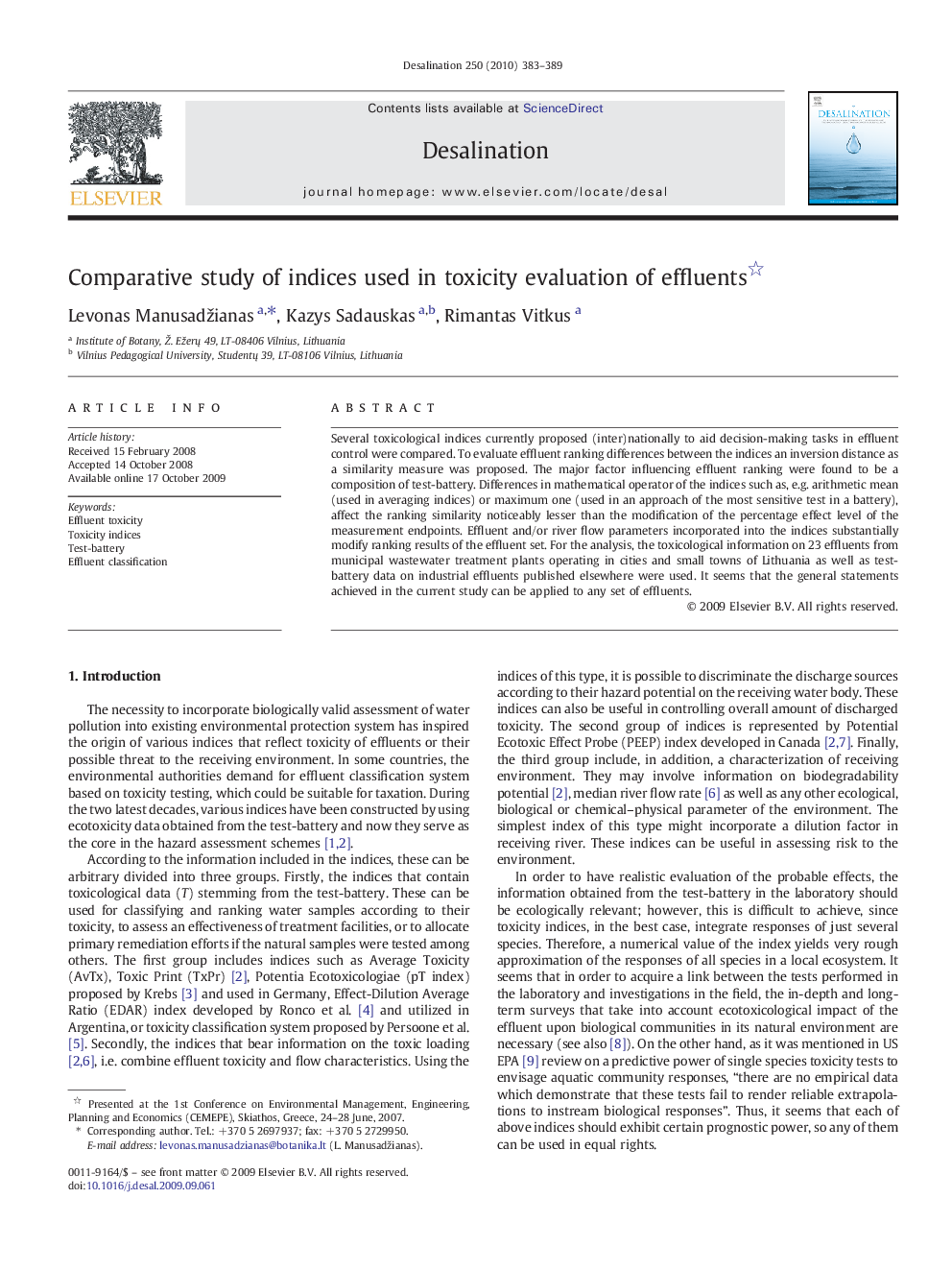| Article ID | Journal | Published Year | Pages | File Type |
|---|---|---|---|---|
| 10386157 | Desalination | 2010 | 7 Pages |
Abstract
Several toxicological indices currently proposed (inter)nationally to aid decision-making tasks in effluent control were compared. To evaluate effluent ranking differences between the indices an inversion distance as a similarity measure was proposed. The major factor influencing effluent ranking were found to be a composition of test-battery. Differences in mathematical operator of the indices such as, e.g. arithmetic mean (used in averaging indices) or maximum one (used in an approach of the most sensitive test in a battery), affect the ranking similarity noticeably lesser than the modification of the percentage effect level of the measurement endpoints. Effluent and/or river flow parameters incorporated into the indices substantially modify ranking results of the effluent set. For the analysis, the toxicological information on 23 effluents from municipal wastewater treatment plants operating in cities and small towns of Lithuania as well as test-battery data on industrial effluents published elsewhere were used. It seems that the general statements achieved in the current study can be applied to any set of effluents.
Keywords
Related Topics
Physical Sciences and Engineering
Chemical Engineering
Filtration and Separation
Authors
Levonas Manusadžianas, Kazys Sadauskas, Rimantas Vitkus,
